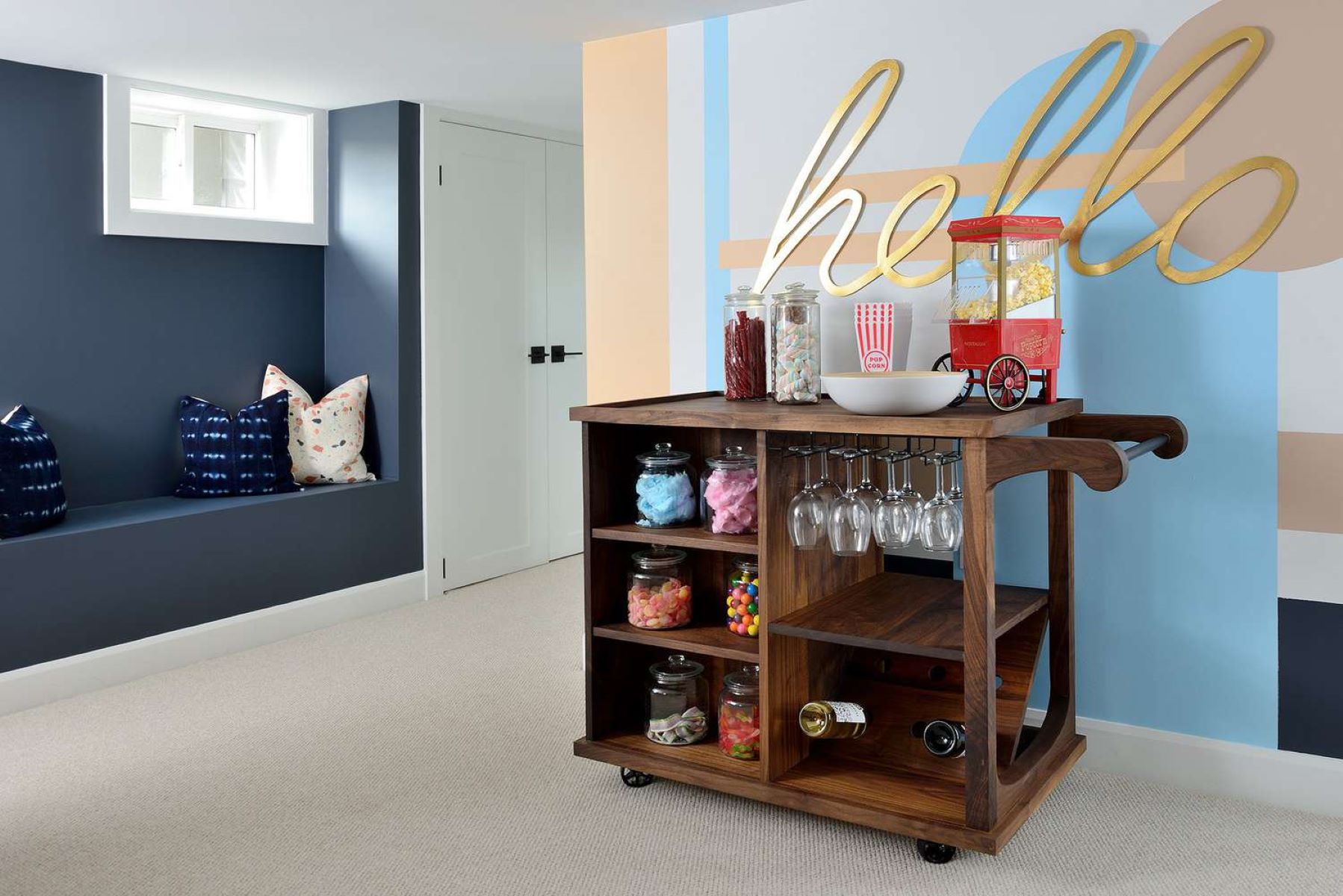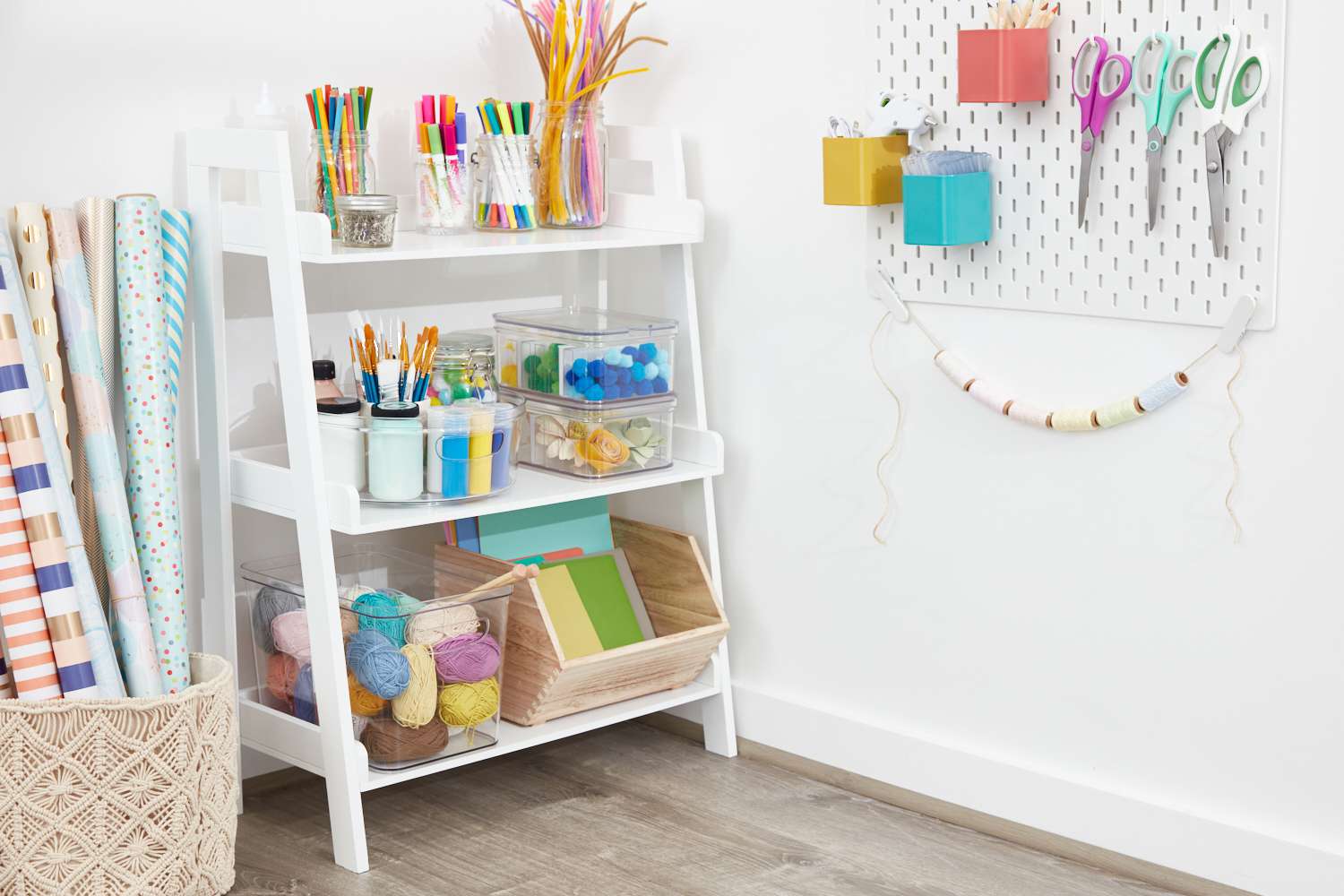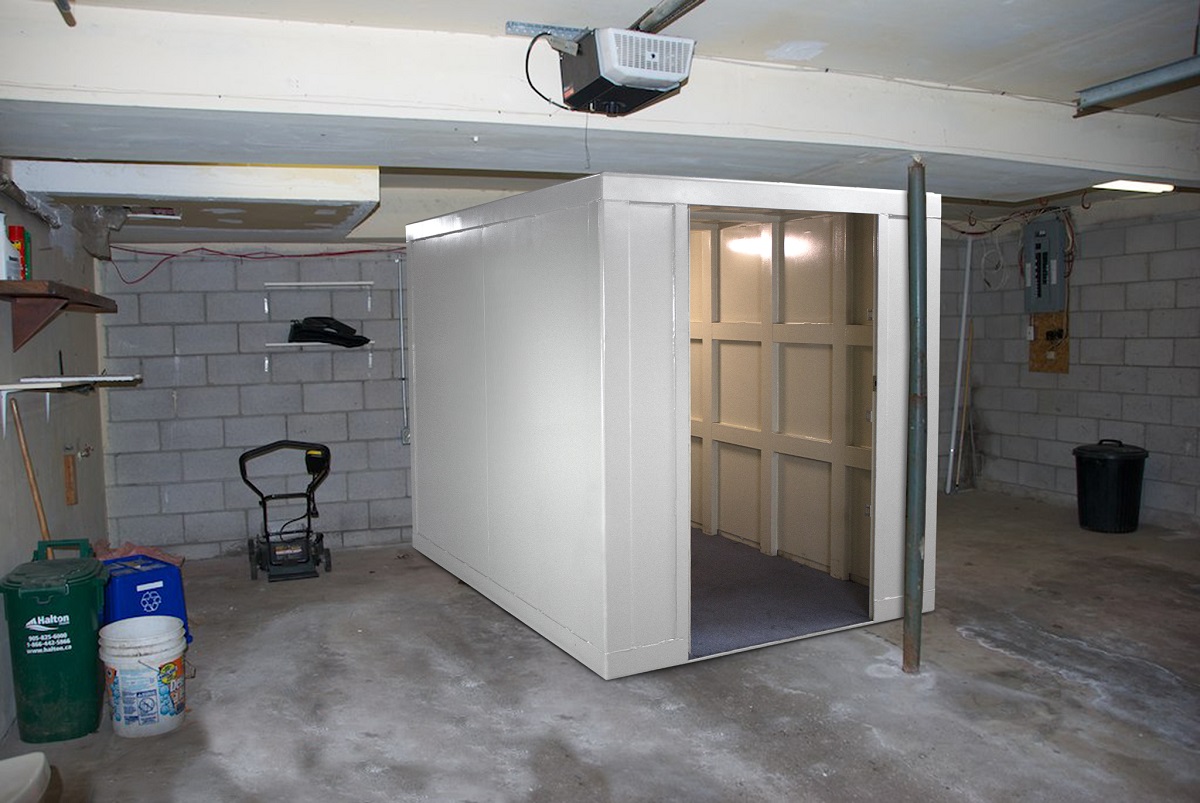

Articles
How To Store Snacks In Your Room
Modified: January 23, 2024
Learn how to store snacks in your room with these helpful articles. Discover creative ideas and organization tips to keep your snacks fresh and easily accessible.
(Many of the links in this article redirect to a specific reviewed product. Your purchase of these products through affiliate links helps to generate commission for Storables.com, at no extra cost. Learn more)
Introduction:
Snacking has become an integral part of our daily routines, whether it’s to satisfy hunger pangs between meals or as a source of comfort during a late-night study session. While storing snacks in the kitchen pantry or refrigerator is the traditional approach, there’s a growing trend of keeping snacks conveniently accessible in our own rooms.
Having a stash of snacks in your room offers a multitude of benefits. It allows for quick and easy access to your favorite treats without having to venture to the kitchen. Plus, having snacks within arm’s reach can be a lifesaver when you’re engrossed in a late-night movie marathon or buried in a stack of textbooks.
In this article, we will explore the advantages of storing snacks in your room, discuss the different types of snacks that are ideal for room storage, provide container options for optimum snack preservation, and share tips on maintaining snack freshness. So let’s dive in and discover how you can create your own personalized snack haven right in your own room!
Key Takeaways:
- Create a personalized snack haven in your room for convenient, stress-relieving, and customizable snacking. Choose non-perishable, individually packaged, and healthy snacks, and maintain freshness with proper storage and organization.
- Elevate your snacking experience by storing a variety of fresh, delicious snacks in your room. Enjoy convenience, privacy, and customization while maintaining snack freshness through strategic organization and regular inventory monitoring.
Read more: How To Store Snacks
Benefits of Storing Snacks in Your Room:
Storing snacks in your room can offer a range of advantages that go beyond convenience. Here are some of the key benefits:
- Convenience: One of the primary benefits of keeping snacks in your room is the convenience factor. Instead of having to leave your room and head to the kitchen every time you want a snack, you can simply reach into your stash right from the comfort of your own space. This is particularly beneficial during late-night cravings or when you’re engrossed in a task and don’t want to interrupt your workflow.
- Privacy: Another advantage of having snacks in your room is the added sense of privacy. In a shared living space where others may have different snacking preferences or dietary restrictions, having your own stash ensures that you always have access to the snacks you enjoy, without the worry of them being eaten or taken by someone else.
- Customization: When it comes to snack choices, everyone has their preferences. Storing snacks in your room allows you to curate a collection that perfectly suits your taste. Whether you prefer sweet, savory, or healthy snacks, you can select the items that excite your taste buds and cater to your dietary needs.
- Stress Relief: Snacking can be a great stress-reliever, and having your favorite snacks readily available in your room can offer instant comfort and satisfaction. Whether you’re dealing with a challenging day or need a pick-me-up during a study session, having your go-to snacks nearby can provide a momentary escape and help alleviate stress.
- Improved Focus: Snacks can also be a source of energy and concentration. By keeping energizing snacks, like nuts or protein bars, in your room, you can refuel and recharge during intense studying or work sessions. The accessibility of these snacks can help you stay focused and on track without the distraction of wandering to the kitchen.
These benefits make storing snacks in your room a practical and enjoyable option for those who crave convenience, customization, and a sense of personal space. However, it’s essential to choose the right snacks and follow proper storage practices to ensure their longevity and freshness. Let’s explore some tips for selecting the ideal snacks for room storage in the next section.
Choosing the Right Snacks for Storage:
When it comes to selecting snacks for storage in your room, it’s important to consider a few factors to ensure the longevity and quality of the snacks. Here are some tips for choosing the right snacks:
- Non-Perishable: Opt for snacks that have a longer shelf life and are less prone to spoilage. This includes items like granola bars, trail mix, dried fruit, crackers, and popcorn. These snacks can be easily stored in your room without the need for refrigeration.
- Individually Packaged: Look for snacks that come in individually wrapped or portioned packages. This helps to maintain freshness and prevents cross-contamination between snacks. It also allows for easy grab-and-go convenience, particularly if you’re always on the move or have limited time between activities.
- Healthy Options: While indulgent snacks are tempting, it’s essential to include some healthier options in your stash. Choose snacks that are lower in sugar, salt, and unhealthy fats. This can include veggie chips, protein bars, rice cakes, or single-serve packs of nut butter. Having healthier choices available will help you strike a balance between indulgence and nutrition.
- Dietary Restrictions: If you have specific dietary restrictions or preferences, ensure that the snacks you choose align with them. Whether you follow a gluten-free, vegan, or dairy-free diet, there are plenty of snack options available to suit your needs. Read labels carefully to ensure that the snacks you select meet your dietary requirements.
- Taste Preferences: Of course, it’s important to include snacks that you genuinely enjoy. Consider your favorite flavors, textures, and snack options when selecting items for your room stash. This will make snacking a more enjoyable and personalized experience.
By selecting non-perishable snacks, opting for individually packaged options, including healthier choices, and considering your specific dietary needs and taste preferences, you can create a snack collection that suits your lifestyle and ensures long-lasting freshness. In the next section, we will explore the different container options for effective snack storage in your room.
Container Options for Snack Storage:
Choosing the right containers for storing your snacks in your room is crucial for maintaining their freshness, preventing staleness, and ensuring easy access. Here are some container options to consider:
- Airtight Containers: Airtight containers are an excellent choice for preserving the freshness of your snacks. They create a seal that keeps air and moisture out, preventing your snacks from going stale. Look for containers with secure lids or airtight seals to ensure optimum freshness.
- Mason Jars: Mason jars are not only aesthetically pleasing but also practical for snack storage. They come in various sizes and are perfect for storing snacks like granola, nuts, or dried fruits. Mason jars help keep your snacks organized and visible while maintaining their freshness.
- Plastic Zip Bags: Plastic zip bags are a versatile and convenient option for storing snacks in your room. They are lightweight, space-saving, and easily portable. Use smaller-sized bags for portioning snacks or larger ones for storing bulk items like pretzels or popcorn.
- Bins or Baskets: If you prefer a visually appealing storage solution, consider using bins or baskets. These are ideal for larger snacks or for organizing multiple types of snacks. Choose ones with handles for easy transport and accessibility.
- Drawer Organizers: If you have limited space in your room, consider utilizing drawer organizers for snack storage. These are designed to fit neatly into drawers and provide compartments for different snacks. Drawer organizers are a great option for keeping your snacks hidden and organized.
When selecting containers, ensure that they are made of food-safe materials and are easy to clean. Glass, BPA-free plastic, or silicone containers are ideal choices. Labeling your containers can also be helpful to quickly identify the snacks you have stored. Additionally, consider the size and shape of the containers, ensuring they fit well in your room without taking up excessive space.
Now that you have chosen the right snacks and containers, it’s time to organize your snack stash in your room. We will discuss effective organizing strategies in the next section.
Organizing Your Snack Stash:
Once you have selected your snacks and containers, it’s time to organize your snack stash in your room. A well-organized snack area not only makes it easy to find and access your favorite treats but also ensures that your snacks stay fresh and organized. Here are some tips for organizing your snack stash:
- Categorize Your Snacks: Start by categorizing your snacks by type or genre. For example, you can group sweet snacks together, savory snacks together, and healthier options together. This will make it easier to locate specific snacks when you’re in the mood for a particular flavor profile.
- Utilize Shelves or Racks: If you have shelves or racks in your room, make use of them for snack storage. Assign specific shelves or compartments for different snack categories. This will help keep your snacks organized and prevent them from getting mixed up or buried at the back.
- Stack or Nest Containers: Make the most of your available space by stackin
g or nesting containers. This will help maximize storage capacity while keeping your snacks visible and easily accessible. Just be mindful not to stack containers too high to avoid accidents or spills. - Label Your Containers: Consider labeling your containers to make it easier to identify snacks at a glance. Labels can be handwritten or printed, and you can include the name of the snack or the category it belongs to. This will help you quickly locate specific snacks and maintain the organization of your stash.
- Arrange Based on Frequency of Consumption: Place snacks that you consume more frequently at the front or within easy reach. This allows for quick and convenient access to your go-to snacks. Less frequently consumed snacks can be placed towards the back or in less accessible spots.
- Rotate and Replenish: As you consume your snacks, make sure to rotate and replenish your stash. Use the “first in, first out” principle, where you consume the oldest snacks first to ensure freshness. Regularly check the expiration dates and remove any expired or stale snacks to maintain the quality of your stash.
By following these organizing tips, you can create a tidy and efficient snack storage system in your room. Not only will it make snacking a breeze, but it will also help ensure that your snacks stay fresh and at their best. In the next sections, we will discuss the importance of properly sealing and preserving snacks, as well as dealing with perishable snacks.
Read more: How To Store Snacks In Pantry
Properly Sealing and Preserving Snacks:
When it comes to storing snacks in your room, proper sealing and preservation techniques are essential to maintain their freshness and prevent them from going stale. Improperly sealed snacks can become unappetizing and lose their original taste and texture. Here are some tips for sealing and preserving snacks:
- Use Airtight Containers: As mentioned earlier, airtight containers are your best friend when it comes to preserving snacks. Make sure to choose high-quality containers with tight-fitting lids or airtight seals to prevent air and moisture from seeping in. This will help keep your snacks crisp and flavorful for longer.
- Remove Excess Air: When storing snacks like chips or crackers, try to remove as much air as possible from the packaging before sealing them in containers or bags. Excess air can expedite the staling process and affect the quality of the snacks. You can use vacuum sealing tools or simply press out the air before sealing the container.
- Repackage Bulk Snacks: If you purchase snacks in bulk, it’s advisable to repack them into smaller portioned containers or bags. This helps minimize the exposure to air every time you open the package, keeping the remaining snacks fresher for longer periods. Consider investing in resealable bags or small airtight containers for this purpose.
- Store in Cool, Dry Places: Heat and humidity can accelerate the degradation of snacks, causing them to spoil or lose their freshness. Store your snack containers in cool, dry areas of your room, away from direct sunlight or sources of heat. This will help maintain the quality and flavor of your snacks.
- Avoid Mixing Strong Aromas: Certain snacks, like flavored popcorn or spiced nuts, can have strong aromas that may transfer to other snacks if stored together. To prevent unpleasant flavor mixing, consider storing strongly aromatic snacks separately or in individual containers. This will help preserve the original flavors of each snack.
- Check Expiration Dates: Regularly inspect your snack containers and packages for expiration dates. Consuming expired snacks can be harmful to your health and may result in stale or rancid flavors. Discard any snacks that have passed their expiration date to maintain the quality of your stash.
By following these sealing and preservation tips, you can extend the shelf life of your snacks and ensure that they stay fresh and enjoyable for longer periods. However, it’s important to note that some snacks, particularly perishable ones, require different storage methods. Let’s delve into handling perishable snacks in the next section.
Consider using airtight containers to store snacks in your room. This will help keep them fresh and prevent them from going stale. Additionally, storing them in a cool, dark place will help maintain their quality.
Dealing with Perishable Snacks:
While non-perishable snacks are easier to store in your room, there may be times when you want to enjoy perishable snacks like fresh fruits, vegetables, or dairy products. It’s important to handle these items properly to prevent spoilage and ensure food safety. Here are some tips for dealing with perishable snacks:
- Plan Your Snack Consumption: Perishable snacks have a limited shelf life, so it’s essential to plan when you’ll consume them. Only purchase the amount of perishable snacks that you can consume within a few days to avoid waste. This way, you can enjoy the freshness of these snacks without worrying about spoilage.
- Refrigeration is Key: Perishable snacks like fruits, vegetables, and dairy products should be stored in the refrigerator to maintain their freshness. Make sure your refrigerator is set to the appropriate temperature to ensure optimum food safety. Keeping perishable snacks at the right temperature slows down the growth of bacteria and helps extend their shelf life.
- Properly Wrap and Store: When storing perishable snacks in the refrigerator, ensure they are properly wrapped or stored in airtight containers to prevent cross-contamination and maintain their quality. Use plastic wrap, zip-top bags, or reusable storage containers to keep your perishable snacks fresh and separate from other items in the refrigerator.
- Separate Fruits and Vegetables: Some fruits release ethylene gas, which can accelerate the ripening process of other fruits and vegetables. To prevent premature spoilage, store fruits and vegetables in separate compartments of your refrigerator or use separate storage containers. This will help maintain the freshness and flavor of each item.
- Follow Storage Guidelines: Different perishable snacks have specific storage requirements. For example, berries are best stored in the refrigerator’s crisper drawer, while leafy greens should be kept in a sealed bag with a paper towel to absorb moisture. Refer to storage guidelines for each type of perishable snack to ensure proper storage and avoid spoilage.
- Monitor Expiration Dates: Pay close attention to the expiration dates of perishable snacks and consume them before they expire. Discard any snacks that show signs of spoilage, such as mold or an unpleasant odor. It’s better to err on the side of caution and prioritize food safety.
By following these guidelines, you can safely enjoy perishable snacks in your room while minimizing waste and ensuring food safety. Remember to refrigerate perishable snacks promptly and consume them within the recommended time frame. Now that you know how to handle perishable snacks, let’s discuss creating a designated snack storage area in your room.
Creating a Designated Snack Storage Area:
To keep your snacks organized and easily accessible, it’s beneficial to create a designated snack storage area in your room. Having a dedicated space for your snacks helps maintain order and prevents them from getting mixed up with other items. Here are some tips for creating a designated snack storage area:
- Select a Convenient Location: Choose a location in your room that is easily accessible and suits your needs. It could be a shelf, a small cabinet, or a drawer that is within reach. Consider the available space and make sure the area is not prone to excessive heat, moisture, or direct sunlight that could affect the quality of your snacks.
- Clear the Space: Before setting up your snack storage area, clear out any clutter or unnecessary items from the designated location. This will give you a clean canvas to work with and make it easier to organize your snacks effectively.
- Optimize Storage Solutions: Use storage solutions that are appropriate for the available space and the types of snacks you have. This could include shelves, baskets, containers, or drawer organizers. Consider the size and quantity of your snacks and choose storage solutions that accommodate them efficiently.
- Arrange Snacks Strategically: Organize your snacks in a way that makes sense to you. Group similar snacks together or categorize them based on flavor, type, or frequency of consumption. Arrange them in a visually appealing manner that is easy to navigate and allows for quick selection.
- Label or Identify Containers: To avoid confusion and make it easier to locate specific snacks, consider labeling or identifying your containers. You can use labels, tags, or even pictures to indicate the contents of each container. This will save you time and prevent accidental mix-ups.
- Rotate and Restock: Regularly check and rotate your snack inventory. As you consume snacks, replenish them with fresh ones as needed. This ensures that you always have a variety of snacks to choose from and helps maintain the organization of your designated snack storage area.
- Maintain Cleanliness: Keep your snack storage area clean and tidy. Regularly wipe down containers, shelves, and surfaces to remove any crumbs or spills. This will help preserve the freshness of your snacks and create an inviting space for snacking.
By implementing these strategies, you can create a designated snack storage area that is organized, visually appealing, and functional. Having a designated space for snacks not only makes it easier to find and access your favorite treats but also helps maintain the overall cleanliness and orderliness of your room. In the next section, we will discuss tips for maintaining snack freshness in your room storage.
Maintaining Snack Freshness:
Ensuring the freshness of your snacks is essential for a satisfying snacking experience. By following a few tips and guidelines, you can help maintain the quality and flavor of your snacks stored in your room. Here are some tips for keeping your snacks fresh:
- Monitor Expiration Dates: Pay attention to the expiration dates on packaged snacks and consume them before they expire. Expired snacks can lose their taste and texture, and consuming them may pose a health risk.
- Seal Snacks Properly: Properly sealing your snacks is crucial for maintaining their freshness. Whether you’re using airtight containers, resealable bags, or original packaging, make sure the seals are tight to prevent air and moisture from entering. This helps to keep your snacks crispy, crunchy, and flavorful.
- Store Snacks in Cool, Dry Places: Heat and humidity can speed up the deterioration of snacks. Store your snacks in cool and dry areas of your room, away from direct sunlight or any sources of heat or moisture. This will help preserve their quality and prevent spoilage.
- Consider Refrigeration: While non-perishable snacks can be stored at room temperature, some snacks may benefit from refrigeration. Items like chocolate, certain nuts, and granola bars with delicate coatings can stay fresh and maintain their texture better in a cool environment.
- Avoid Mixing Strong Flavors: Some snacks, especially those with strong aromas or flavors, can transfer their taste to other snacks if stored together. To maintain the original flavors of each snack, consider storing strongly flavored snacks separately or using individual containers to prevent flavor mixing.
- Avoid Direct Contact with Air: Oxygen can cause snacks to become stale. When storing snacks in containers, remove excess air from the package before sealing or use vacuum-sealed containers to minimize exposure to air.
- Rotate Snacks Regularly: Incorporate a rotation system for your snacks. Place newer snacks at the back and move older ones to the front. By doing this, you’ll ensure that snacks are consumed in a timely manner and reduce the chance of snacks going unnoticed and becoming stale.
- Avoid Excessive Handling: Handling snacks with your hands can transfer oils and moisture, which can impact their freshness. If possible, use utensils or clean, dry hands when handling snacks to maintain their quality.
By following these guidelines, you can prolong the freshness of your snacks and enjoy them at their best. Remember to regularly check the condition of your snacks, dispose of any expired or spoiled items, and replenish your stash with fresh snacks as needed. With proper storage and care, your snacks will remain delicious and enjoyable for longer periods of time.
Now that we’ve discussed maintaining snack freshness, let’s move on to the topic of monitoring and replenishing your snack inventory in your room storage.
Read more: How To Organize Snacks In Pantry
Monitoring and Replenishing Your Snack Inventory:
Keeping track of your snack inventory in your room storage is important to ensure that you always have a variety of snacks available when you need them. By monitoring and replenishing your snack stash regularly, you can maintain a well-stocked selection of treats. Here are some tips for effectively managing your snack inventory:
- Create an Inventory System: Start by creating a simple inventory system to keep track of the snacks you have. This can be as basic as a list on your phone or a notebook. Update the inventory whenever you add new snacks or consume existing ones.
- Set Regular Checkpoints: Establish a schedule to check your snack inventory. This could be weekly, bi-weekly, or monthly, depending on your snacking habits and consumption rate. During these checkpoints, review your inventory, discard any expired snacks, and make note of snacks that need to be replenished.
- Make a Shopping List: Based on your inventory check, create a shopping list of snacks that need to be replenished. Note down the specific snacks and quantities you need to restock. Having a shopping list saves you time and ensures you don’t miss out on any favorites.
- Plan for Variety: Use your inventory system to track the variety of snacks you have. Make an effort to diversify your snack choices, keeping a balance between sweet, savory, healthy, and indulgent options. This way, you’ll always have a range of snacks to suit your cravings and preferences.
- Take Advantage of Sales and Deals: Keep an eye out for sales and deals on your favorite snacks. Stock up when there are discounts to save money and ensure you have a plentiful supply of snacks. Just make sure to check the expiration dates to avoid purchasing more than you can consume before they expire.
- Consider Subscription Services: Subscription snack services can be a convenient way to regularly receive a variety of snacks. These services often offer personalized selections based on your preferences and dietary needs. Subscribing to such a service can ensure a steady influx of new and exciting snacks to add to your inventory.
- Be Mindful of Expiry Dates: Keep an eye on the expiration dates of your snacks. As you replenish your inventory, check the expiration dates of new snacks to ensure you’re consuming them before they go bad. Set reminders or use a system that prioritizes snacks closest to their expiration dates to avoid wastage.
- Share with Others: If you find that you have an abundance of snacks, consider sharing them with friends, roommates, or colleagues. Sharing snacks not only helps prevent waste but also creates an opportunity to bond over food and discover new favorites.
By monitoring and replenishing your snack inventory consistently, you can ensure a satisfying and varied selection of snacks in your room storage. Regularly checking expiration dates, creating a shopping list, and planning for variety will help maintain a well-stocked and enjoyable snack stash.
Now that we’ve discussed the importance of monitoring and replenishing your snack inventory, let’s wrap up our article.
Conclusion:
Storing snacks in your room can bring convenience, customization, and a sense of personal space to your snacking routine. By carefully choosing the right snacks, utilizing appropriate containers, and organizing your snack stash effectively, you can create a dedicated snack storage area that enhances your snacking experience.
Storing snacks in your room offers numerous benefits, including easy accessibility, privacy, and customization. It allows you to have your favorite snacks within arm’s reach, without the need to venture out to the kitchen. You can curate a collection of snacks that align with your taste preferences, dietary needs, and nutritional goals.
When selecting snacks, consider non-perishable options that have longer shelf lives and are less prone to spoilage. Individually packaged snacks are ideal for maintaining freshness and preventing cross-contamination. Additionally, including healthier options in your stash can promote mindful snacking habits.
To keep your snacks fresh, choose appropriate containers such as airtight containers, mason jars, plastic zip bags, or bins and baskets. Properly sealing snacks and storing them in cool, dry places helps maintain their quality and flavor. Handling perishable snacks requires refrigeration and careful attention to storage guidelines.
Create a designated snack storage area in your room by selecting a convenient location and optimizing storage solutions. Categorize and arrange snacks strategically, label containers for easy identification, and practice regular rotation and restocking to ensure you always have a variety of snacks available.
Maintaining snack freshness involves monitoring expiration dates, properly sealing snacks, and avoiding flavor mixing. Monitoring and replenishing your snack inventory ensures that you have a well-stocked selection of snacks, and making a shopping list based on your inventory helps streamline the restocking process.
By following these guidelines, you can enjoy a snack-filled haven in your own room, with snacks that are fresh, delicious, and tailored to your preferences. So go ahead, stock up on your favorite treats, and elevate your snacking experience by storing snacks in your room!
Frequently Asked Questions about How To Store Snacks In Your Room
Was this page helpful?
At Storables.com, we guarantee accurate and reliable information. Our content, validated by Expert Board Contributors, is crafted following stringent Editorial Policies. We're committed to providing you with well-researched, expert-backed insights for all your informational needs.














0 thoughts on “How To Store Snacks In Your Room”